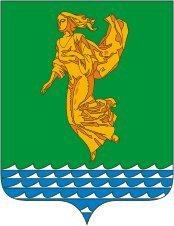The history of the Angarsk city began in the thirties when it was decided to build a plant of artificial liquid fuel in the east of the country. But these plans were prevented by the war.
Angarsk is a city born of victory. This statement has a historical explanation. On the 6th day after the end of the Great Patriotic War – on May 15, 1945, the construction of the future city of Angarsk began. Initially, in 1945, the plans were to build a plant for the production of artificial liquid fuel (the future Combine-16, and now-Angarsk Petrochemical Company) and a settlement for 30,000 people. Equipment for the plant was brought from the city of Blehhammer (Blehgammer), which was in working order for the enterprise of artificial liquid fuel with the capacity of 500-700 thousand tons of gasoline per year.
October 15, 1945, in Taiga a few kilometers from the Kitoy settlement landed the first constructors – 15 people under the direction of the foreman Nikolai Pavlovich Loginov. They began to build dugouts, to equip the stables, fold, canteen, remaining from the summer military camps, which were unloading trains from Germany with equipment for the plant. The scale of the plant’s construction and the settlement were enormous. Only the Interior Ministry of the USSR had the opportunity to send the necessary amount of organized labor for the construction of such an enterprise and provide all the necessary material and technical resources. Therefore, on June 16, 1948, by the Decree of the Council of Ministers of the USSR and the Order of the Ministry of Interior of the USSR № 0405 from July 6, 1948 was created a Construction Department and Penitentiary Work Camp № 16 of the Ministry of Internal Affairs of the USSR, which consisted of construction and correctional labour camp for 40,000 people

In 1948, the permanent housing of 7238 square meters was built, as well as temporary housing from yurts and barracks – 4706 square meters, in addition to Camp housing 15.5 thousand square meters in the Maysk settlement, as well as in 2, 6, 11 and 13 districts. For the power supply of the facilities of the Combine-16 and housing in 1948, the first foundations of TPP-1 were laid. In 1949, works not only on the construction of the main workshops of the Combine-16 but also the laying of the city under the conditional name “Sotsgorod” on the Moscow tract and construction of cottages for engineering and technical personnel on the future Naberezhnaya street had begun. That year was put into operation a permanent living area of 18.57 thousand square meters, a temporary housing for a freelancer of 25.8 thousand square meters. and for the camp contingent – 58.3 thousand square meters. The construction of the residential array was carried out in complex: together with the houses were built schools, kindergartens, and nurseries, shops, asphalt streets. The scale of construction of the plant and the settlement allowed to solve the issue of the transformation of the Angarsk settlement to the city of regional subordination, assigning the name “City of Angarsk”. The decree on this was signed by the Chairman of the Presidium of the Supreme Soviet of the RSFSR on May 30, 1951.

Angarsk is called the Siberian Leningrad (St. Petersburg). Design of Angarsk was carried out by one design organization – Architectural-planning workshop № 4 Leningrad branch of State Construction Project. The direct design managers were architects Evsey Yakovlevich Wittenberg, L. Timofeev and engineer Zernickij. Such architects as A. Tarantula, I. Davydov, F. Kircideli, V. Jarostchuk, I. Levchenko and engineer M. Smolich were included into authors team. Therefore, Angarsk has a lot in common with Leningrad: streets are direct, classic style in architecture, three-beam system of squares.
In 1952, the constructors ensured the launch of the Combine-16 – the ignition of the first generator of artificial liquid fuel. This historic event took place on 29 January 1953.
The year 1953 was marked by the construction in Angarsk of not only production facilities of the Combine-16, housing, and recreational objects, but also enterprises: refrigerator of the Ministry of Trade; Bakery of the Ministry of Foodstuffs; Garment Factory; Furniture Factory; Plant of metal structures (in Maget settlement).

In 1953 in the structure of the Combine-16 was organized a tram shop. On November 27, 1953, the first tram went through Angarsk, which route was 3.5 km from the Combine management of the plant to the stop “FZO”.
In the 1950s, oil production increased dramatically in our country. In this connection, the production of gasoline from coal has become almost unprofitable. By the Decree of the Council of Ministers of the USSR of April 13, 1955 № 707-429 It was decided to change the profile of the plant and transfer it to the fuel and chemical direction with oil refining while maintaining the processing of coal as raw materials for Production of hydrogen and synthesis gas. In 1957, the Ministry of Chemical Industry of the USSR decided to create a new technological scheme for oil refining at the plant. The first oil refineries came into operation in 1960.
960 году.

In 1971 (the city was 19 years old) Angarsk was awarded the Order of the Red Banner of labor for the successes achieved by the city workers in fulfilling the objectives of the five-year plan for the development of industrial production. At that time Angarsk was the 10th city awarded this order.
The order of the Red Banner of Labour was also awarded to the enterprises of Angarsk: Angara Construction Department (1966), Angara Petrochemical Plant (1966), Angara Electrolysis Chemical Plant (1966), Cement-mining Plant (1976), association “Kitojles” (1981).
On April 29, 1996, the Duma of the city of Angarsk approved the emblem of Angarsk. In 2004, the ANGARSK flag was approved.
29 апреля 1996 года Думой города Ангарска был утвержден герб Ангарска. В 2004 году утвержден флаг Ангарска.





